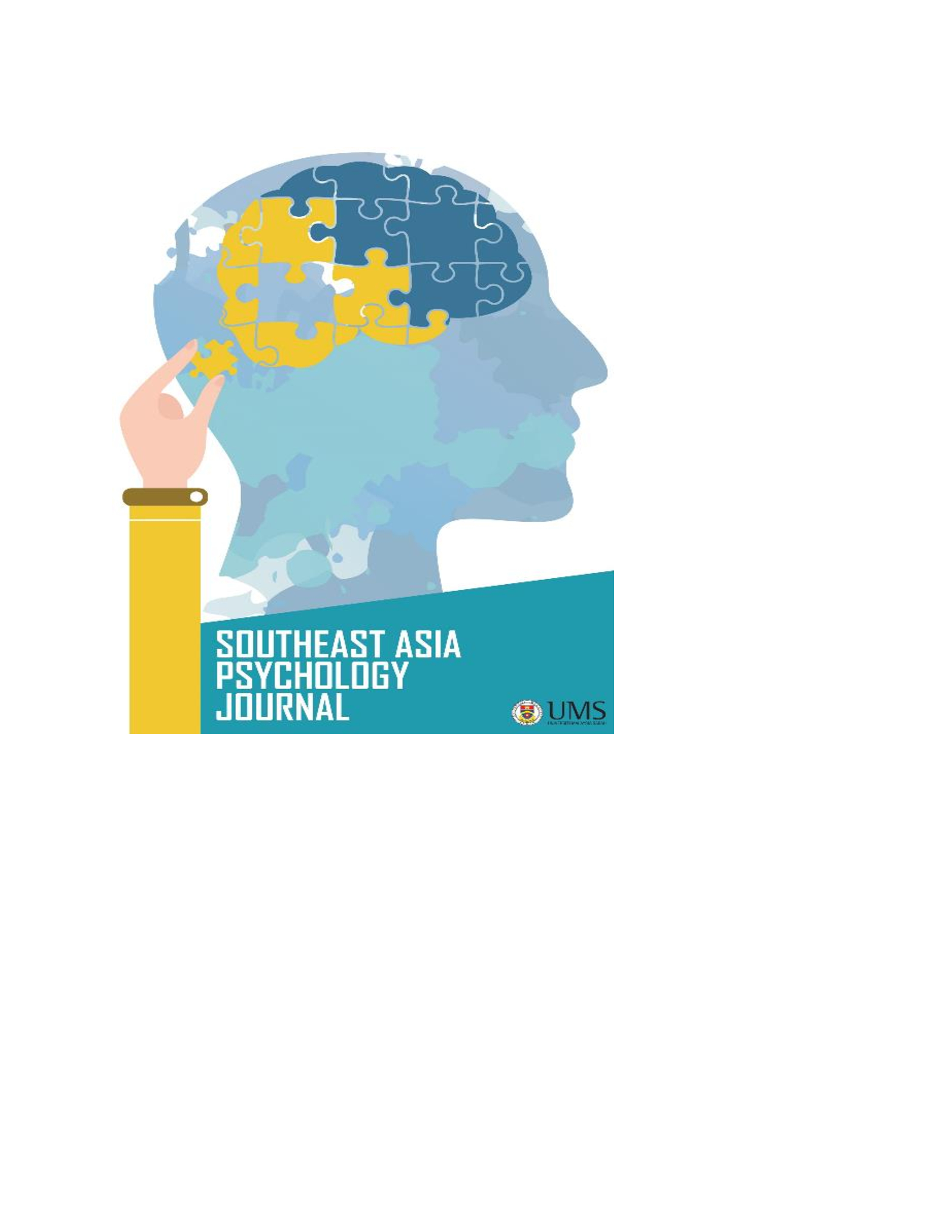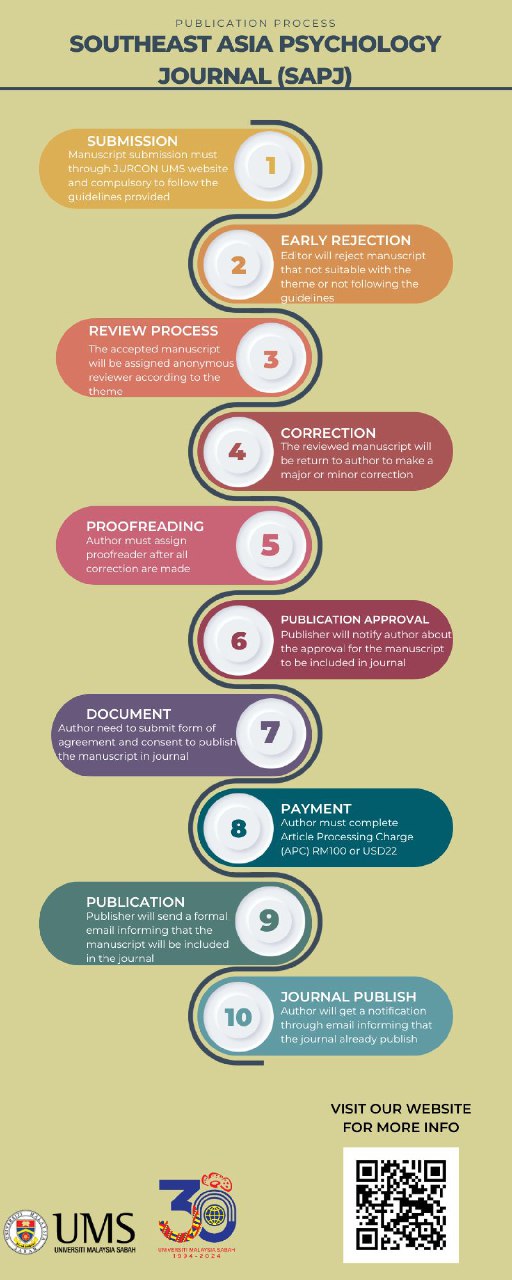SOCIAL PARTICIPATION, GENDER, AND WELL-BEING IN OLDER ADULTS: INSIGHTS FROM MALAYSIAN ACTIVE AGEING INDEX STUDY
DOI:
https://doi.org/10.51200/sapj.v12i1.5298Keywords:
Active Ageing Index, Social Participation, Older AdultsAbstract
This study establishes a social participation index among older adults in Malaysia, utilising data from the nationwide project, "Development of an Active Ageing Index for Malaysia." The study employed multistage cluster simple random sampling, that included 800 respondents from Selangor, Terengganu, Sabah, and Sarawak. The social participation domain encompasses four indicators: (i) voluntary activities; (ii) caregiving for children/grandchildren; (iii) caregiving for the infirmed and disabled; and (iv) political participation. The social participation index scored 22.8. The most common participation involved "care for children and grandchildren," followed by "care for the infirmed and disabled," "political participation," and finally "voluntary activities." Females showed a significantly higher contribution to "care for children and grandchildren" compared to males. Then, more males reported attending meetings of trade unions, political parties, or political action groups, as well as contacting politicians or public officials, compared to females. Moreover, those who engaged in weekly "care and/or education of grandchildren" reported significantly higher well-being. Similarly, individuals who attended trade union, political party, or political action group meetings, or contacted politicians or public officials in the past year, had significantly higher well-being compared to those who did not engage in these activities. This study highlights the ongoing potential for older adults to make meaningful contributions to society, particularly in grandparenting-related activities. Furthermore, there is a clear need for innovative enrolment programs aimed at encouraging voluntary activities among older individuals within the local community. Lastly, the paper addresses several significant implications arising from the study's findings.
References
Faul, F., Erdfelder, E., Buchner, A., & Lang, A.-G. (2009). Statistical power analyses using G* Power 3.1: Tests for correlation and regression analyses. Behavior Research Methods, 41(4), 1149–1160.
Grundy, E. M., Albala, C., Allen, E., Dangour, A. D., Elbourne, D., & Uauy, R. (2012). Grandparenting and psychosocial health among older Chileans: A longitudinal analysis. Aging & Mental Health, 16(8), 1047–1057. https://doi.org/10.1080/13607863.2012.692766
Hidalgo, M. C., Moreno-Jiménez, P., & Quiñonero, J. (2013). Positive Effects of Voluntary Activity in Older Adults. Journal of Community Psychology, 41(2), 188–199. https://doi.org/https://doi.org/10.1002/jcop.21522
Lou, V. W. Q., & Chi, I. (2012). Grandparenting Roles and Functions. In K. K. Mehta & L. L. Thang (Eds.), Experiencing Grandparenthood: An Asian Perspective (pp. 47–59). Springer Netherlands. https://doi.org/10.1007/978-94-007-2303-0_3
Marsillas, S., De Donder, L., Kardol, T., van Regenmortel, S., Dury, S., Brosens, D., Smetcoren, A.-S., Braña, T., & Varela, J. (2017). Does active ageing contribute to life satisfaction for older people? Testing a new model of active ageing. European Journal of Ageing, 14(3), 295–310. https://doi.org/10.1007/s10433-017-0413-8
Martinson, M., & Minkler, M. (2006). Civic Engagement and Older Adults: A Critical Perspective. The Gerontologist, 46(3), 318–324. https://doi.org/10.1093/geront/46.3.318
Mehta, K. K., & Thang, L. L. (2011). Introduction: Grandparenthood in Asia. In Experiencing Grandparenthood: An Asian Perspective (pp. 1–19). Springer.
Mjelde-Mossey, L. A., & Chi, I. (2004). Gender Differences in Expectations Predictive of Volunteer Experience Among Older Chinese Professionals in Hong Kong. Journal of Ethnic & Cultural Diversity in Social Work, 13(4), 47–64. https://doi.org/10.1300/J051v13n04_03
Pavlova, M. K., & Lühr, M. (2023). Volunteering and political participation are differentially associated with eudaimonic and social well-being across age groups and European countries. PLOS ONE, 18(2), e0281354. https://doi.org/10.1371/journal.pone.0281354
Pinquart, M., & Sörensen, S. (2000). Influences of socioeconomic status, social network, and competence on subjective well-being in later life: A meta-analysis. Psychology and Aging, 15(2), 187–224. https://doi.org/10.1037/0882-7974.15.2.187
Quaranta, M., & Dotti Sani, G. M. (2018). Left Behind? Gender Gaps in Political Engagement Over the Life Course in Twenty-Seven European Countries. Social Politics: International Studies in Gender, State & Society, 25(2), 254–286. https://doi.org/10.1093/sp/jxy005
Tang, F. (2007). Socioeconomic Disparities in Voluntary Organization Involvement Among Older Adults. Nonprofit and Voluntary Sector Quarterly, 37(1), 57–75. https://doi.org/10.1177/0899764007300409
Taniguchi, H. (2006). Men’s and Women’s Volunteering: Gender Differences in the Effects of Employment and Family Characteristics. Nonprofit and Voluntary Sector Quarterly, 35(1), 83–101. https://doi.org/10.1177/0899764005282481
Um, J., Zaidi, A., & Choi, S.-J. (2019). Active Ageing Index in Korea – Comparison with China and EU countries. Asian Social Work and Policy Review, 13(1), 87–99. https://doi.org/https://doi.org/10.1111/aswp.12159
United Nations Economic Commission for Europe (UNECE). (n.d.-a). Results, Results, Active Ageing Index Project. https://statswiki.unece.org/display/AAI/Active+Ageing+Index+Home%22
United Nations Economic Commission for Europe (UNECE). (n.d.-b). Results, Results, Active Ageing Index Project.
United Nations Economic Commision for Europe (UNECE). (2018). Active Ageing Index. https://doi.org/https://unece.org/DAM/pau/age/Active_Ageing_Index/AAI_leaflet.pdf
Viguer, P., Meléndez, J. C., Valencia, S., Cantero, M. J., & Navarro, E. (2010). Grandparent-grandchild relationships from the children’s perspective: Shared activities and socialization styles. Spanish Journal of Psychology, 13(2), 708–717.
Von Bonsdorff, M. B., & Rantanen, T. (2011). Benefits of Formal Voluntary Work Among Older People. A Review. Aging Clinical and Experimental Research, 23(3), 162–169. https://doi.org/10.1007/BF03337746








